A Guide to Israel’s Holy Sites
The land of Israel (‘known as ‘Eretz Yisrael’ in Hebrew) may be the homeland of the Jewish people, but it is also home to Baha'i Faith followers, Christians and Muslims. Many of the ancient landmarks in the country are holy to them too, so let’s take a look at some of Israel's holy sites, and see what significance they have to their respective pilgrims:
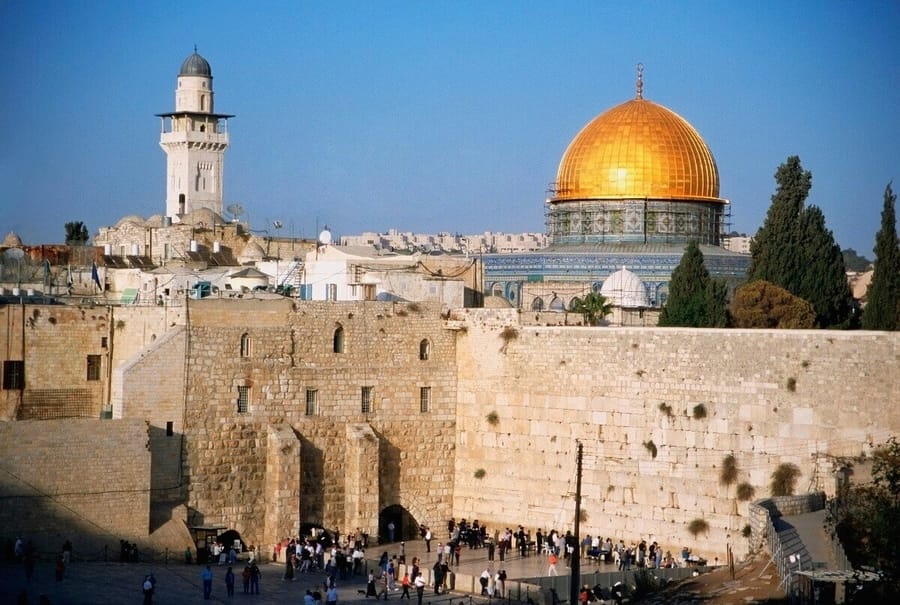
The Western Wall and the Dome of the Rock. Photo credit: © Shutterstock
Jerusalem Christian Holy Sites
Multi-denominational Christian holy sites in Jerusalem
1. Church of the Holy Sepulchre - Famous for being the place at which Christ was crucified, buried, and resurrected, this site was built by Constantine the Great in 326 CE. In the heart of the Old City, Its magnificent interior contains the tomb of Jesus, the anointing stone, and Calvary itself (with two chapels, one in which visitors can view the Rock of Golgotha). It is regarded by all Christian denominations as an extremely sacred site.
2. Tomb of the Virgin Mary - Located in the Kidron Valley, at the bottom of the Mount of Olives, this is believed by Roman Catholics and the Eastern Orthodox to be the burial place of Mary, the mother of Jesus.
3. Church of All Nations - The Church of All Nations (also known as the Basilica of Agony) is a prominent Roman Catholic church perched on the Mount of Olives. Its interior is lined with golden mosaics depicting the suffering of Jesus and it is said that this is the spot at which Jesus prayed, before his arrest by the Romans. Its distinctive dome and Corinthian columns hint at its Byzantine heritage.
4. Dormition Abbey - Built in the 5th century, this Benedictine community lies on Mount Zion, just outside the Old City. It was on this spot - according to tradition - that the Virgin Mary died.
5. Garden of Gethsemane - This garden has great significance in the Christian tradition, as it is supposedly the place where Jesus prayed before his arrest and subsequent crucifixion. Gethsemane (which means ‘olive press’ in Aramaic) has several olive trees in its garden.
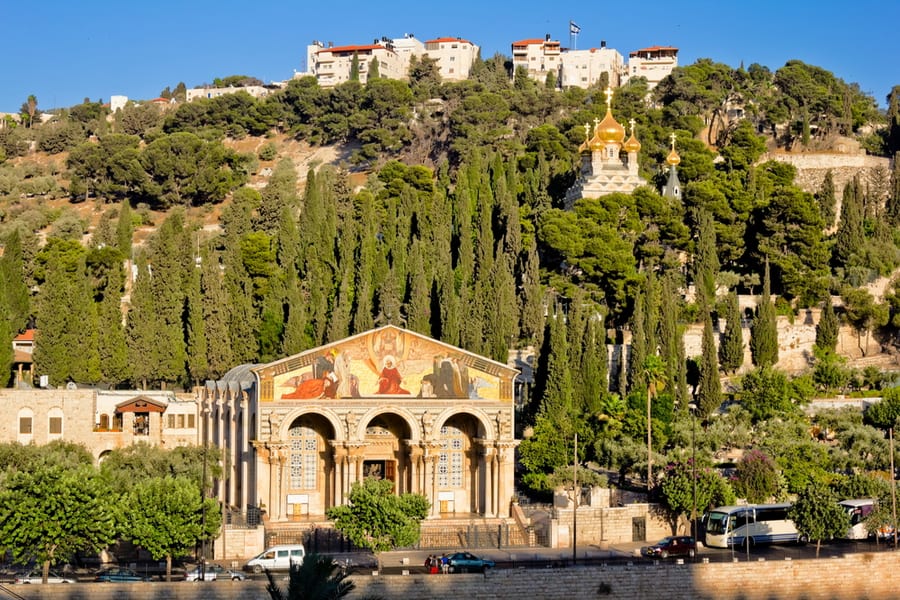
Church of all Nations, Mt. Olives, Jerusalem. Photo credit: © Shutterstock
6. Via Dolorosa - This processional route, known as the Sorrowful Way, passes through the Old City, tracing the path that Jesus is thought to have walked en route to his crucifixion. Stations of the Cross mark certain events along the route and each Easter, on Good Friday, thousands retrace the path.Eastern Orthodox holy sites in Jerusalem
7. Church of St Alexander Nevsky – this Russian Orthodox Church is built over the remains of what historians believe was the ‘Judgment Gate’ where Jesus passed on his way to Calvary.
Oriental Orthodox holy sites in Jerusalem
8. Cathedral of St. James - This 12th-century Armenian church lies near the Zion Gate and was constructed in 1163 during the reign of Queen Melisende. According to tradition, in its walls is buried the head of St James the Great and the body of St James the Less.
Protestant holy sites in Jerusalem
9. Lutheran Church of the Redeemer - This Evangelical church is of part German heritage and was founded in 1898 in the presence of Kaiser Wilhelm II. The church has a prominent bell tower and visitors walking up the circular staircase are afforded astonishing views of Jerusalem at forty meters.
10. The Garden Tomb - popular with Evangelical and Anglicans, the Garden Tomb is a non-denominational site with a rock-cut tomb. Located just outside the Old City Walls, some Protestants consider it to be the site of the burial and resurrection of Jesus.
To see the complete list of holy sites in Jerusalem feel free to read this article.
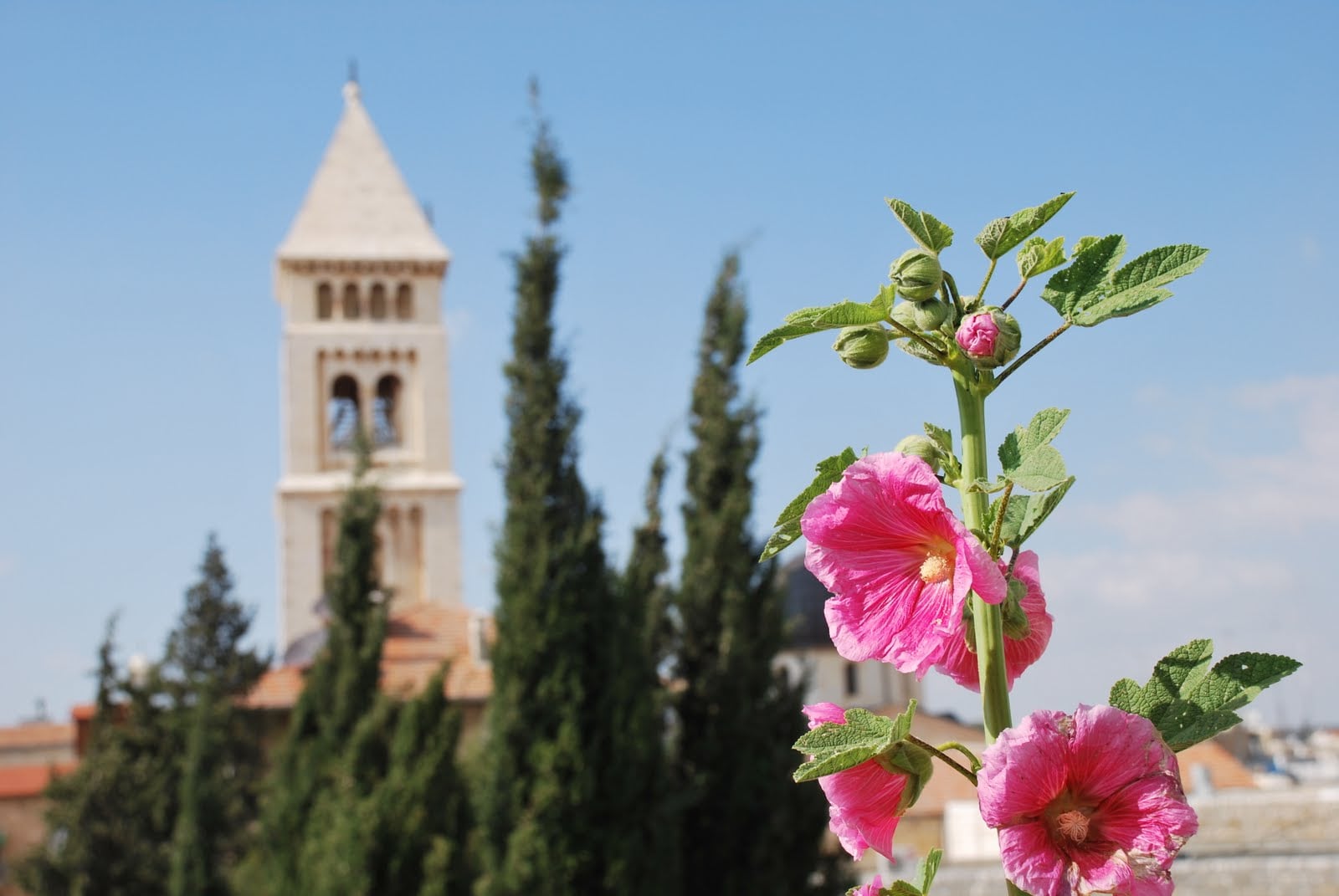
The Lutheran Church of the Redeemer. Photo credit: ©Jenny Ehrlich
Galilee and Northern Israel Christian Holy Sites
1. The Jordan River - The Jordan River has great significance in the Bible as it is the border of the land that God gives to the Israelites. Flowing through the Sea of Galilee and down to the Dead Sea, it is not just a boundary and a crossing but, in Christian terms, a metaphor for rebirth and salvation. Today, pilgrims around the world come to be baptized here (see Yardenit below).
2. Nazareth - This famous town is home to the Church of the Annunciation, which was built on the spot where the Virgin Mary was visited by the Angel Gabriel. This breathtaking Basilica is 50 meters high and home to the Grotto of the Annunciation and Mary’s Well, where Mary was told she was going to give birth to the son of God, Jesus.
3. Cana - This small village in Galilee is the spot where, according to the Gospel of John, Jesus turned water into wine at the marriage celebration of a poor couple.
4. Mount Tabor - Mount Tabor is widely regarded as the site of the Transfiguration of Jesus as, according to the Gospels, this was the place that Jesus was ‘transformed into light’ and spoke to Moses and Elijah the Prophet.
5. Tsipori - According to tradition, this spot - close to Nazareth - was the original home of Mary’s parents, Joachim and Anne. It is also the place at which Joseph and Mary settled with Jesus, on return from Egypt.
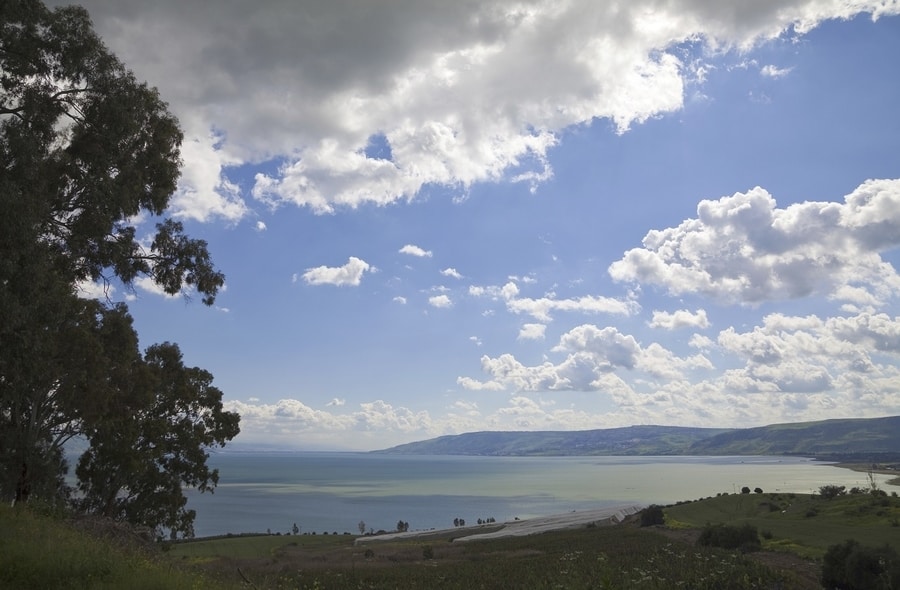
Sea of Galilee. Photo credit: © Shutterstock
6. Sea of Galilee - This famous spot is where Jesus calmed a terrible storm, walked upon the water, and caught large numbers of fish. Jesus preached here for much of his adult life and recruited his disciples, who were fishermen, from the area.7. Capernaum - On the shores of the Sea of Galilee, this town was a center for the activities of Jesus and his second home - he performed several miracles here (including healing a paralyzed man) and also visited the synagogue.
8. Tabgha - This ancient church dates back to Byzantine times and is full of astonishing mosaics that show plants, animals, and geometric patterns. It is famed for being the place at which Jesus performed a miracle, transforming 2 fishes and 5 loaves into food for 5,000 people.
9. The Mount of Beatitudes - Situated on Mount Eremos, this is believed to have been the spot at which Jesus gave his Sermon on Mount. Its Roman Catholic Franciscan chapel has a marble veneer and gold mosaic in its dome.
10. Yardenit Baptismal Site - Yardenit lies on the banks of the Jordan River and some Christians believe that this was the site at which Jesus was baptized. Today, thousands of pilgrims come here to be ‘reborn’ in its waters.
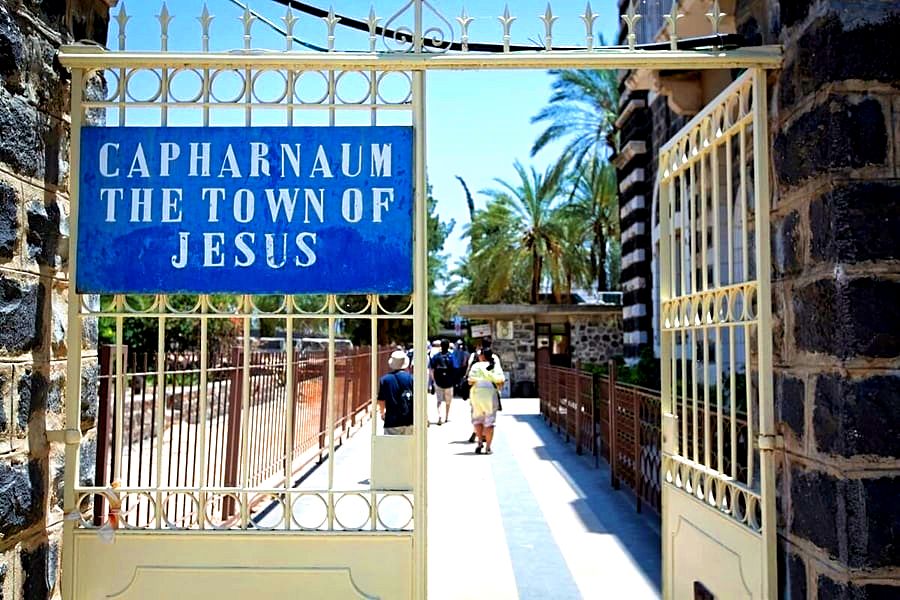
Capernaum, the town of Jesus. Photo credit: © Shutterstock
Jewish Holy Sites in Israel
1. Tomb of King David - Located near the Zion Gate in the Old City, near the Abbey of the Dormition, this is one of the top Jewish holy sites in Jerusalem, as it is regarded as the burial place of King David.
2. Mount of Olives Jewish Cemetery - The Mount of Olives is home to an extraordinary Jewish Cemetery, which is over 500 years old and contains somewhere between 70,000 and 140,000 tombs with many notable rabbis and zionist leaders buried there. It also contains the tombs of three prophets Haggai, Zechariah, and Malachi, and pilgrims have come to pray there since the Middle Ages.
3. Western Wall - The Western Wall (in Hebrew, the Kotel) is the last remaining wall dating back to the time of the Second Temple (the era of King Herod) and an extremely holy place for Jews, who come from around the world to pray and ask for blessings from God. Today it stands at 19 meters and its largest stone weighs 570 tonnes!
4. Mount Meron - Mount Meron, in Galilee, is home to the tomb of Rabbi Shimon bar Yochai. Each year, at the time of the Jewish festival of Lag B’Omer, tens of thousands of Jews come here as part of a pilgrimage, to pray at his burial site.
5. Tomb of Rabban Gamaliel of Yavne - Yavne is home to the tomb of Rabbi Gamaliel who, according to Jewish philosophy, was a great sage whose greatest achievement was ending the theological arguments that distinguished the houses of Shammai and Hillel.
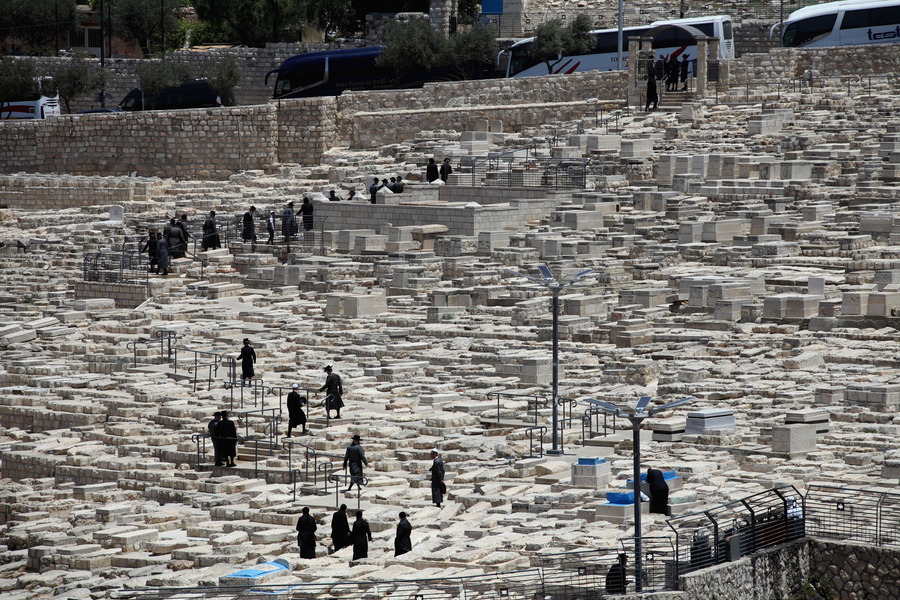
Mount of Olives Jewish Cemetery. Photo credit: © Dan Porges
6. Mount Betarim - one of the peaks of Mount Dov (otherwise known as"Jabal Ross"), according to one Jewish tradition this is the site of the covenant of the pieces between Abraham and God.7. Katzrin Talmudic village and Synagogue - This Jewish village in northern Israel contains an ancient synagogue that dates back to the 6th century but was destroyed around the time of 749, in an earthquake that struck northern Israel. The village and prayer house are now part of an open-air museum.
8. Safed - According to Jewish tradition, Safed, a town in the north of Israel, was founded by one of Noah’s sons, after the Great Flood. It became a holy city after the Jews were expelled from Spain in 1492 and arrived here. Safed today is known as a center for the study of Kabbalah (a mystical Jewish philosophy) and has a cemetery of notable interest.
9. Beit Alpha Synagogue - Situated in the Gilboa, this ancient synagogue contains a particularly beautiful floor mosaic, depicting different scenes, including a Zodiac Wheel, a synagogue scene, and the biblical scene where Abraham prepares to sacrifice his son Isaac. Inscriptions in Aramaic and Greek are above the entrance and on either side are a lion and buffalo (the ‘guardians;) of this prayer house.
10. Tiberias - Tiberias, with the Tomb of Maimonides and Tomb of the Matriarchs, historically, is one of Israel’s four holy cities (the other three being Jerusalem, Hebron, and Safed). Founded in 20 CE by Herod the Great’s son, it sits at the edge of the Sea of Galilee and is the spot at which the Jerusalem Talmud was written.
To see the complete list of Jewish holy sites in Israel feel free to read this article.
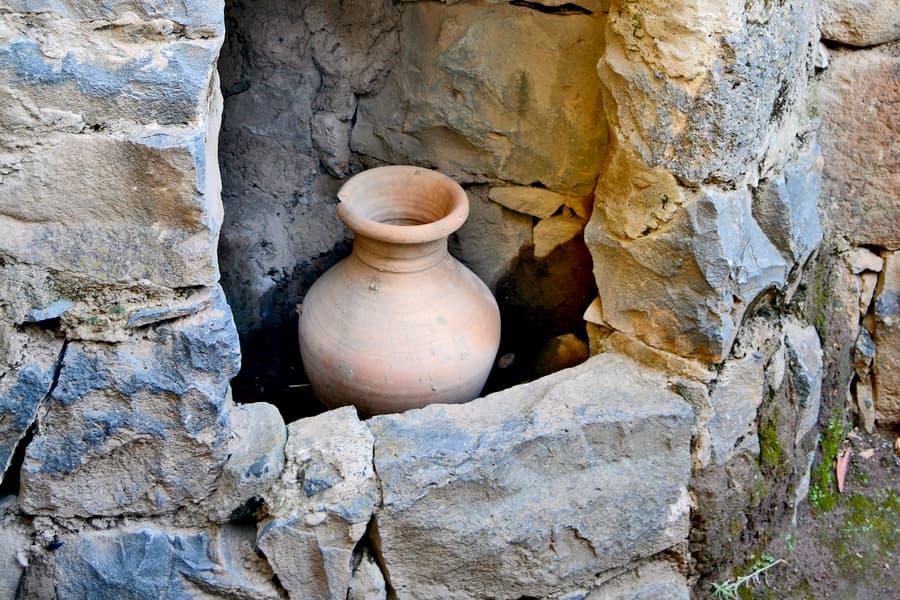
Remnants of Talmudic village in Katzrin. Photo credit: © Shutterstock
Islamic Holy Sites in Israel
1. Temple Mount - Also known as Haram al-Sharif, this Jerusalem site is home both to the Dome of the Rock and the Al Aqsa mosque, the third holiest shrine in Islam.
2. Al-Aqsa Mosque - Muslims believe that this was the spot the Prophet Mohammed flew over, on his ‘Night Journey’ en route to Mecca. Underneath it is the Al-Qibli Chapel, a Muslim prayer hall.
3. Dome of the Rock - The Dome of the Rock is located on the Temple Mount and, as well as being a holy shrine, is one of the oldest examples of Islamic architecture. Its distinctive gold-plated Dome can be seen across Jerusalem. The Well of Souls or Holy of Holies is a partly natural, partly man-made cave situated inside the rock.
4. Dome of the Chain - This domed and free-standing building is located east of the Dome of the Rock and was built between 681-692 CE by the Umayyads.
5. Mosque of Omar - Located next to the Church of the Holy Sepulchre, this mosque was built in the 12th century on the site where Caliph Omar Ibn al-Khattab accepted the city's surrender from the Byzantines. Its 15-meter high minaret was built in 1465 by the Mamluks.
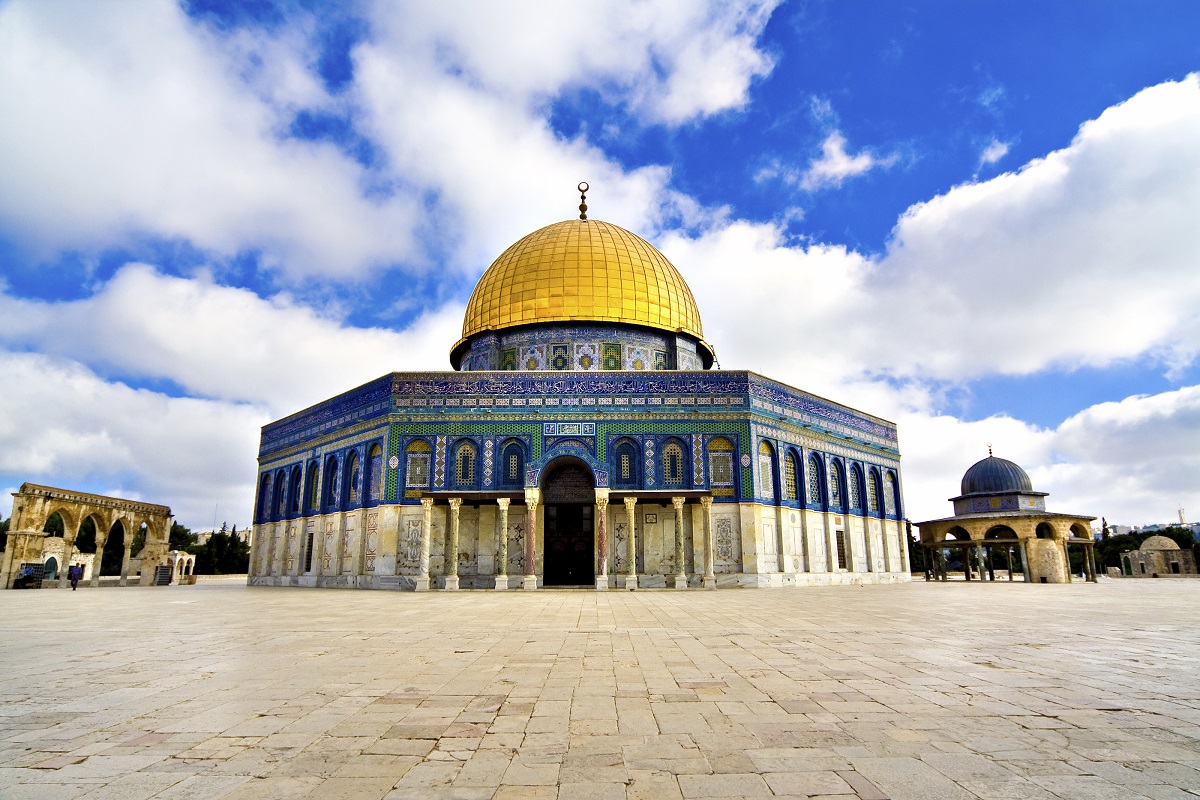
Dome of the Rock, Jerusalem. Photo credit: © Shutterstock
6. Dome of Ascension, Jerusalem - Situated close to the dome of the rock, in Islamic tradition this free-standing dome commemorates the Prophet Mohammed’s ascension to heaven.7. Al-Khanqah al-Salahiyya Mosque - Situated on what was the former palace of the Latin Patriarch, this building became a mosque after the Crusader’s surrender of Jerusalem to Saladin in 1181. A minaret was added in 1417.
8. Al-Yaqubi Mosque - Once the Crusader Church of St. James Intercisus, this building was transformed into a mosque when Jerusalem fell to Saladin. It is situated close to the Jaffa Gate.
9. White Mosque - Built in the 8th century, in Ramle, by the Umayyads, all that remains of the White Mosque today is a minaret, According to Islamic tradition, this mosque contained the shrine of the prophet Nabi Salih.
10. Al Jazzar Mosque, Acre - Archaeologists believe that the entrance door’s inscription means the mosque was founded around 1781 AD. Outside of Jerusalem, it is Israel’s largest mosque today and is also known as the Pasha Mosque.
Bahai Holy Sites in Israel
1. Baha'i Gardens, Acre - this site in Acre marks the tomb of the founder, Baha' Allah, considered to be a prophet of the Baha'i faith. As such, it is the holiest place for members of the Baha'i people.
2. Baha'i Shrine & Gardens, Haifa - this shrine, and the fantastically beautiful gardens surrounding it, was built as a memorial to one of the Baha'i faith's martyrs, Bab Mirza Ali Muhammad, executed by the Persian authorities in 1850.
Bahai Gardens, Haifa. Photo credit: © Dmitry Mishin
 Login / Register
Login / Register
 Contact Us
Contact Us
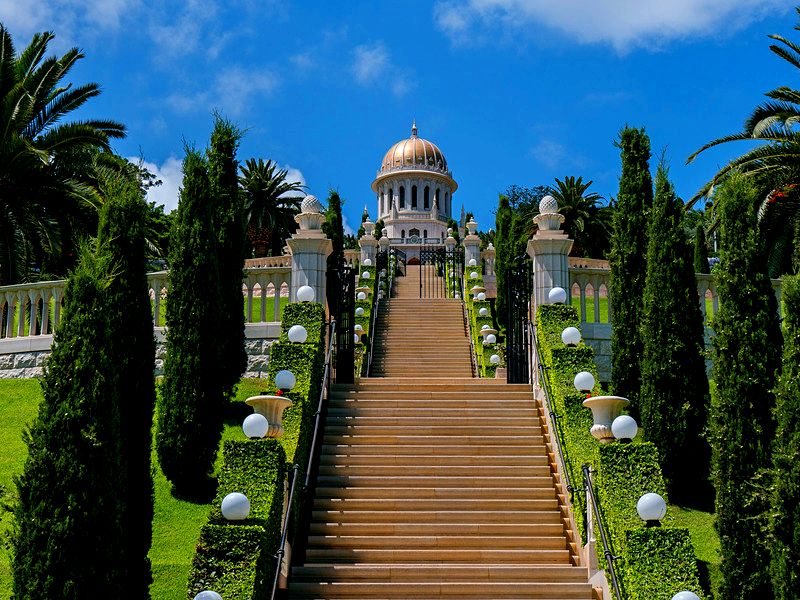
 Certificate of Excellence
Certificate of Excellence Guaranteed Departure
Guaranteed Departure Low Prices Guaranteed
Low Prices Guaranteed 24/7 Support
24/7 Support




